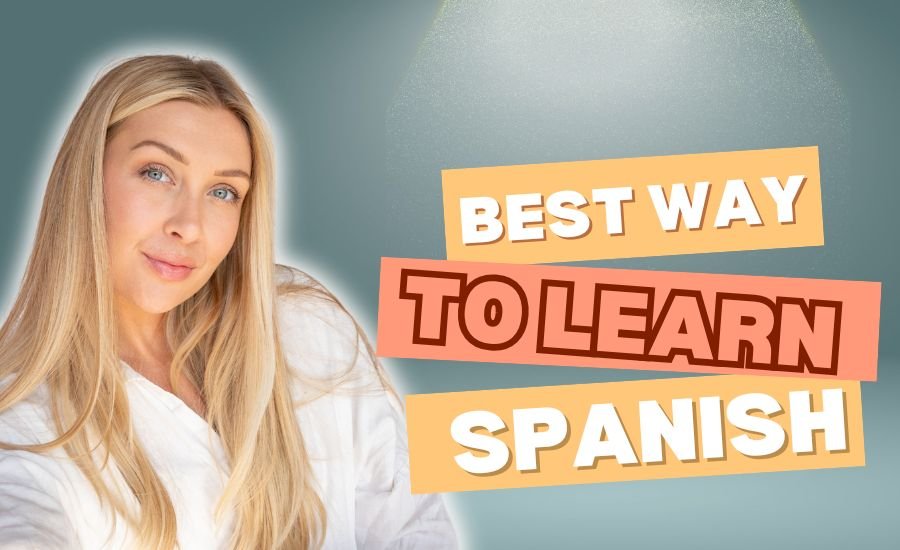Learning Spanish opens up incredible opportunities. Whether you’re preparing for an adventure in Spain, expanding career possibilities, or wanting to connect with millions of Spanish speakers worldwide, Spanish fluency can be a game-changer. At TECH DENSER, we believe that finding the best way to learn Spanish should be both practical and enjoyable. In this guide, we’ll walk you through seven tried-and-true methods to master Spanish, no matter your experience level. Each method is designed to boost your progress with unique strategies that fit your learning style. Let’s dive into the journey to fluency together!
Leverage Language Learning Apps for Daily Progress
Language learning apps are a fantastic way to get started with Spanish. They offer interactive lessons, engaging activities, and the ability to learn on your own time. Apps like Duolingo, Babbel, and Memrise are popular for their ease of use and effectiveness in building a solid foundation.
- Easy Access Anywhere, Anytime
Apps make learning accessible wherever you are. With just a few minutes each day, you can build your vocabulary and practice grammar. Features like daily reminders keep you consistent. - Engaging and Fun
The gamified elements keep you motivated by turning learning into a fun challenge. As you earn points, complete levels, and unlock rewards, you’ll feel accomplished, which encourages regular practice. - Tailored Lessons for Beginners and Advanced Learners
These apps personalize the experience to match your skill level, so whether you’re a total beginner or looking to polish advanced skills, there’s something for everyone.
Pro Tip: Pair your app learning with real-life conversations for greater retention and faster progress.
Learn Through Listening: Podcasts and Music in Spanish

Immersing yourself in Spanish audio helps you understand pronunciation, intonation, and common phrases. Podcasts and music offer an enjoyable way to hear native speakers and improve listening skills.
- Podcasts for All Levels
Choose podcasts designed for Spanish learners, such as Coffee Break Spanish and News in Slow Spanish. These podcasts slow down speech or explain phrases, making it easier for beginners. - Active Listening and Note-Taking
Don’t just listen—try repeating key phrases or writing down new words to boost comprehension. This keeps you engaged and helps you recall more later. - Build Vocabulary with Spanish Music
Create a playlist of Spanish songs you enjoy. Music is a powerful tool for learning new words and phrases, as lyrics tend to repeat key vocabulary and expressions.
Listening while commuting, exercising, or doing chores can seamlessly build your skills without extra time commitment.
Watch Spanish Movies and Shows with Subtitles
Watching Spanish content with subtitles immerses you in the language, giving context and helping with vocabulary acquisition. Visual cues paired with audio make it easier to understand the language and retain new phrases.
- Start with Spanish Subtitles for Familiar Shows
Watching shows you’ve already seen in Spanish with Spanish subtitles allows you to pick up vocabulary in a familiar context. You’ll connect words to actions and expressions, reinforcing learning. - Move to Original Spanish Content
Once you’re comfortable, try watching Spanish films or series like La Casa de Papel (Money Heist) or Narcos. Real-life conversation in these shows introduces you to slang and colloquial phrases. - Practice Pronunciation by Mimicking Actors
Try repeating lines you find interesting or useful to practice pronunciation and rhythm. It’s a great way to learn how native speakers express emotions.
This method combines entertainment and education, keeping you motivated and engaged.
Engage in Conversation with Native Speakers
Speaking with native Spanish speakers is one of the most effective ways to develop fluency. Language exchange apps and local conversation groups offer great opportunities for regular practice.
- Use Language Exchange Platforms
Apps like HelloTalk, Tandem, and Speaky connect you with native Spanish speakers looking to learn English. You can practice Spanish while helping them with English, creating a mutual learning environment. - Build Confidence in Speaking
Practicing with real people helps you get comfortable with Spanish and provides feedback on pronunciation and grammar. It’s the fastest route to gaining confidence. - Set Weekly or Biweekly Sessions
Establish a regular schedule for conversation practice. This ensures consistent progress and helps you gain familiarity with conversational Spanish, which textbooks can’t always provide.
Learning through conversation can make Spanish feel more natural, reducing anxiety and building practical speaking skills.
Use Flashcards and Vocabulary Tools for Quick Recall

Building a strong vocabulary is key to mastering any language, and flashcards are a tried-and-true method for vocabulary retention. Use physical flashcards or digital ones like Anki and Quizlet, which offer premade Spanish decks.
- Break Vocabulary into Categories
Organize your flashcards into categories like food, travel, or hobbies. Learning in chunks helps you associate words and makes studying more manageable. - Incorporate Spaced Repetition
Spaced repetition systems (SRS) present words at intervals based on how well you remember them, ensuring long-term retention. - Practice with Real-Life Scenarios
Try making flashcards for phrases you’d use in real-life situations, like ordering food or asking for directions. This makes your vocabulary practice practical and relevant.
Flashcards make it easy to study vocabulary anywhere, and spaced repetition ensures the words stick.
I Hope You Appreciate This: TheWifeVO
Enroll in a Structured Spanish Course for In-Depth Learning
Taking a formal Spanish course offers the benefits of structured lessons, assignments, and expert feedback. Many platforms provide options for both in-person and online courses.
- Online Platforms for Flexible Learning
Websites like Coursera, edX, and Rosetta Stone offer Spanish courses that range from beginner to advanced. Many of these platforms let you learn at your own pace, fitting into your schedule. - Benefit from Instructor Feedback
Having a teacher provides personalized guidance on pronunciation, grammar, and more. They can correct mistakes that you might not catch on your own. - Classes Cover a Range of Skills
Structured courses cover listening, speaking, reading, and writing, ensuring you build well-rounded language skills.
This option suits learners who enjoy a guided approach, and the accountability of a class can help you stay motivated.
Immerse Yourself in a Spanish-speaking environment
For a truly transformative learning experience, consider traveling to a Spanish-speaking country. Full immersion forces you to practice Spanish every day in real-life situations.
- Homestay Programs and Language Schools
Programs like homestays let you live with a Spanish-speaking family, creating daily opportunities for language practice. Language schools in countries like Spain, Mexico, and Argentina also offer immersive learning environments. - Experience Cultural Nuances
Immersion not only builds language skills but also introduces you to cultural context and regional slang. This makes your language use more natural and adaptable. - Real-World Practice
Ordering food, asking for directions, and socializing with locals give you practical practice and boost confidence in using Spanish in daily life.
Immersion is ideal for those looking for a fast track to fluency, combining learning with adventure.
Conclusion
Learning Spanish is a rewarding journey that opens up new worlds and connections. Each of these methods offers unique advantages, allowing you to tailor your approach based on your goals, schedule, and learning style. Whether you’re using apps for daily practice, watching Spanish shows, or having conversations with native speakers, the key is consistency. At TECH DENSER, we believe that the best way to learn Spanish is to make it part of your life and have fun with the process. With these tools and techniques, you’re well on your way to mastering Spanish. ¡Buena suerte y feliz aprendizaje! (Good luck and happy learning!)
FAQs
Q: How quickly can I learn Spanish?
A: The speed of learning Spanish varies based on how much time you dedicate to practice. With daily effort, conversational fluency can be achieved in 6–12 months.
Q: Which app is the best for learning Spanish?
A: Duolingo, Babbel, and Memrise are popular choices. Each offers unique features to help you build vocabulary and grammar skills.
Q: Do I need to travel to a Spanish-speaking country to become fluent?
A: While immersion is beneficial, it’s not required. With dedicated practice using language resources, you can become fluent from home.
Q: Is watching Spanish shows helpful for beginners?
A: Yes, especially if you use Spanish subtitles. It introduces you to vocabulary and improves listening comprehension.
Q: How often should I practice Spanish?
A: Consistent daily practice, even for 15–30 minutes, is ideal for building and retaining language skills.
Follow us for the latest recipe news and updates: TECH DENSER




